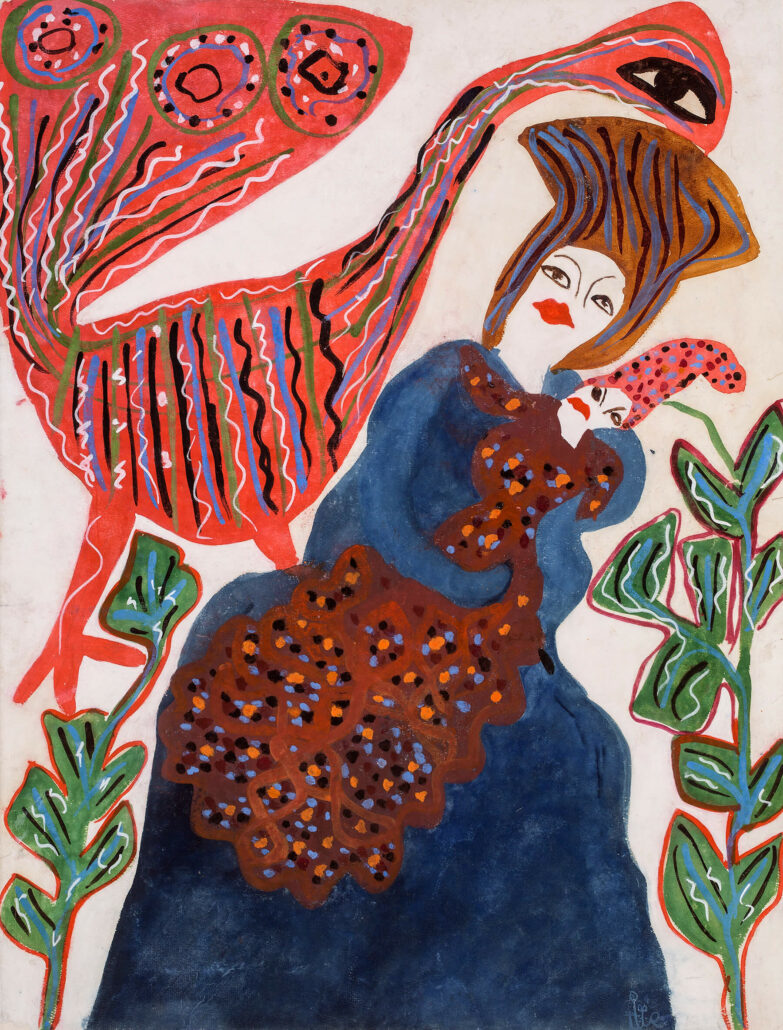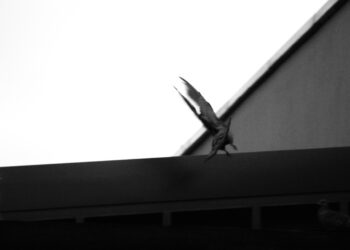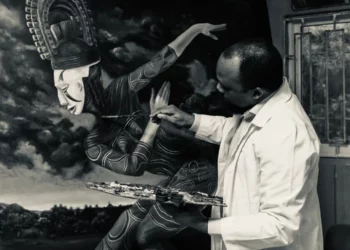New and rarely seen art from the Sharjah Art Foundation Collection explores the expanded practice of drawing, delving into the concept of the double

Baya, Femme et enfant au paon, 1947. Sharjah Art Foundation Collection. Image courtesy of Sharjah Art Foundation. Photographer: Shafeek Nalakath
‘Drawing Time: Duets’ presents new and historical works from the Sharjah Art Foundation Collection, exploring the expanded range and possibilities of drawing as a practice. On view from 4 May to 4 August 2024 at Gallery 4 of Al Mureijah Art Spaces, this exhibition, which grew out of a two-year research project into conserving paper, seeks to re-examine the very nature of drawing as a culturally situated disciplinary practice – one that begins in the mind and extends into myriad material forms.
Bringing together the works of 15 intergenerational artists, ‘Drawing Time: Duets’ conjures maps of colour and texture across pigment and paper, lines and marks on skin and screen, revealed through both animated and restrained movement, and gestures that present a composite picture of what drawing is and could be today.
The exhibition also delves into the concept of the double, the pair, the rejoinder. Acts of repetition accumulate through a curated scenography, in which artistic duets – duos who dance and sing together, who, through the right dissonance or imperfect resonance, find themselves in a state of harmony – guiding visitors across a century in time. The metaphor of the duet as a space of restitution inspired the inclusion of works by artists Amal Kenawy, Helen Khal and Ibrahim Massouda – three individuals whose wounds are expressed here through symbolic figuration and abstraction.
The presentation of Claudette Johnson’s Standing Figures (2021), captured in a moment suspended in space and time, marks the UAE premiere of the artist’s work. The figures in the portraits bear a recognisable likeness to the artist. However, they are not self-portraits, but images conjured from the imagination. Beckoning the viewer to look again, the two figures – vestiges of Black women – command a respect all their own. Their presence establishes a new framework for approaching the art historical canon that refutes the long, deliberate erasure of Black bodies from western narratives.
Co-signed by Omer Khairy and George Edward Scuncucur (Khairy’s alter ego, often identified only as George Edward), Portrait sets the stage for what is to come in this exhibition: connections and resonances in pairings of work across a range of mediums. In this painting, the word ‘duet’ is written above a single figure, unifying the concept of the pair and the one. The contrasting composition – dark blue clothing on yellow, a yellow head on blue – may suggest both a complementary relationship and a potential disconnect between body and mind.
In Amal Kenawy’s Untitled, vivid splotches of watercolour on paper take root in the artist’s haunting one-point perspective of a hollow room inhabited by anthropomorphic figures with suspended purple limbs. Like a monoprint, the two-page spread moves from an individual experience to that of a double quite seamlessly. Each image depicts almost a glitch of the other, an imperfect resonance from Kenawy’s mind.
Khairy’s work resurfaces in a presentation drawn from the artist’s letters, envelopes and sketches. One drawing shows a woman leaning against the interior wall of an urban house, cradling a bird and an art book; a couple whispers in the background. A second drawing depicts a man playing a trumpet-like instrument in the foreground, with a mother and child seated to the right, all against a backdrop that could be the Nile River.
The defined figures in both of Khairy’s works, similar in composition, are integrated into the detail of the backgrounds, which blend culturally specific motifs of Sudanese daily life with certain stylistic features of eighteenth-century British drawings. Rendered in ink, the line drawings highlight differences between urban and rural life in two distinct societal settings. These aspects reflect the diversity and richness of Sudanese communities, a subject matter Khairy was known to capture adeptly in his works.
In Acolytes, David Koloane’s mixed-media artwork on paper, abstract, heavily textured figures congregate, engage and find solace in the act of communion. Positioned opposite is a rehearsal for a rendition of Theaster Gates’ Billy Sings Amazing Grace with the musical collective The Black Monks. The notion of rehearsal as a space for gathering and communion presents a domain bridging the visual and the musical, overlapping realms of shared experience and meaning. This juxtaposition serves as a tangible representation of the Black Consciousness Movement, which fostered a sense of solidarity among Black communities globally.
‘Drawing Time: Duets’ is part of a wider research project by the Sharjah Art Foundation Collection team – one that examines the complex histories of drawing and print culture in contemporary artistic practices, with a specific focus on the multiple centuries that route these practices in Afro-Asian and Pacific history.
The artworks included in the exhibition are by Baya, Mounir Canaan, Kimathi Donkor, Ibrahim El-Salahi, Theaster Gates, Kamala Ibrahim Ishag, Claudette Johnson, Amal Kenawy, Helen Khal, Omer Khairy, David Koloane, Farideh Lashai, Ibrahim Massouda, Eduard Puterbrot and Hassan Sharif.
‘Drawing Time: Duets’ is curated by Dr Omar Kholeif, Director of Collections and Senior Curator, with Souraya Kreidieh, Senior Collections Researcher and Spatial Designer, and Khalid Jauffer, Curatorial Assistant, Sharjah Art Foundation.
The exhibition will be on view from the 4th of May until the 4th of August, 2024, at Gallery 4, Al Mureijah Art Spaces, Sharjah. For more informaiton, please visit the Sharjah Art Foundation.



